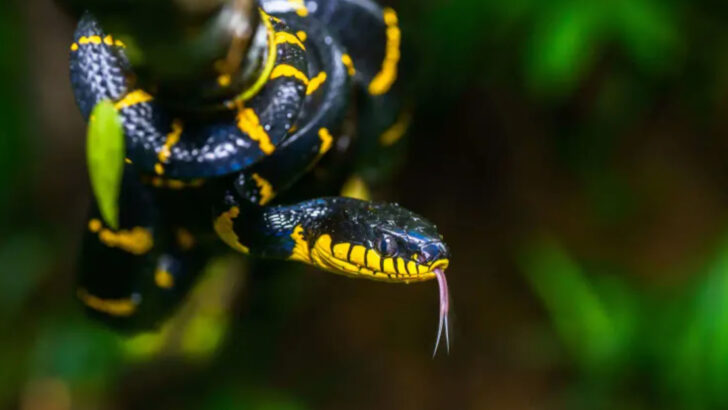When the sun goes down, some snakes are just getting started.
While many reptiles bask in daylight, a few prefer the shadows—slipping silently through the night in search of prey. These nighttime hunters rely on stealth, patience, and their sharp senses to survive.
You won’t usually spot them unless you know where—and when—to look. But they’re out there, moving quietly while the world sleeps.
These snakes prove that the dark doesn’t always mean quiet. Sometimes, it means something is watching.
Banded Krait
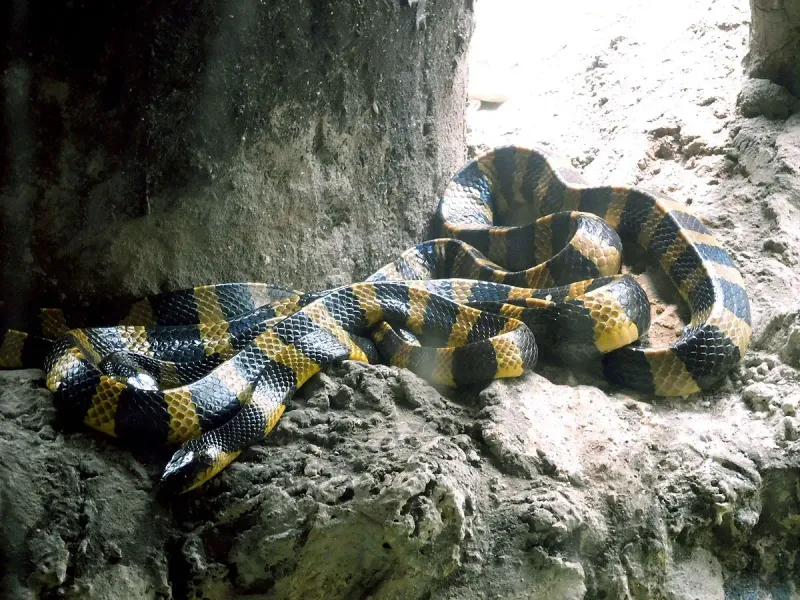
In the dim light of the night, the Banded Krait becomes a formidable hunter. Its striking black and yellow bands serve both as a warning and a tool for camouflage among the forest floor. Known for its potent venom, this snake prefers to hunt amphibians, rodents, and other snakes after sunset.
A nocturnal creature by habit, the Banded Krait relies on its sharp senses to detect prey in the dark. It’s often found in forests and agricultural lands, where it can silently glide through the underbrush, making it an effective night-time predator.
Bushmaster
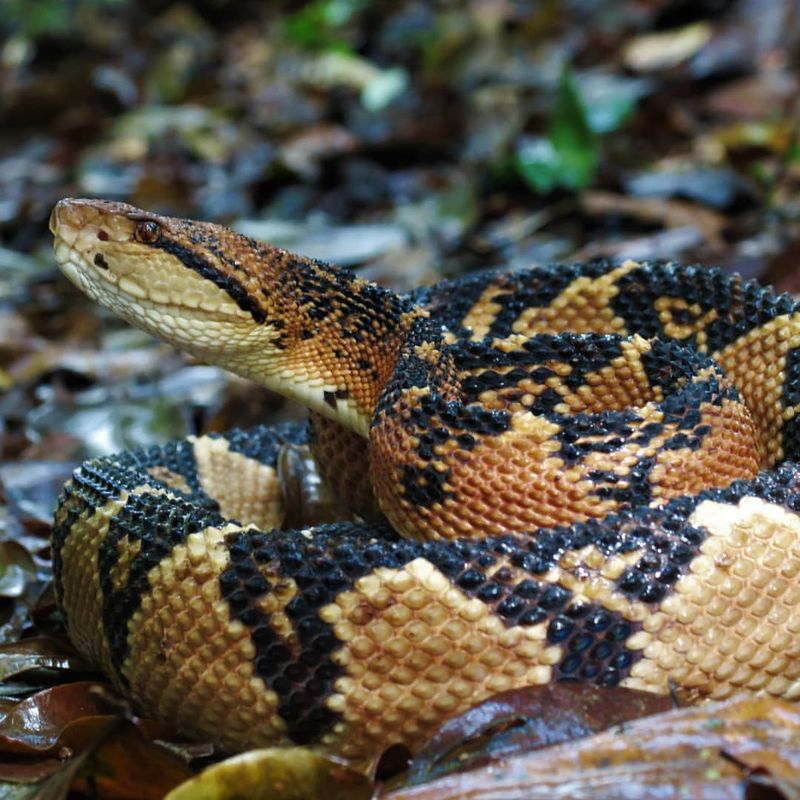
Lurking in the rainforests of Central and South America, the bushmaster is a formidable nocturnal predator. Its impressive length and camouflage make it an elusive creature to spot. It prefers the night for its hunting endeavors, using stealth to ambush small mammals and birds. This snake is highly venomous, relying on its potent bite to subdue prey quickly. Its nocturnal habits are a strategic adaptation to avoid daytime predators and heat. The bushmaster’s silent prowling is a spectacle of nature’s predatory elegance, showcasing the intricacies of survival in the jungle’s shadows.
Ball Python
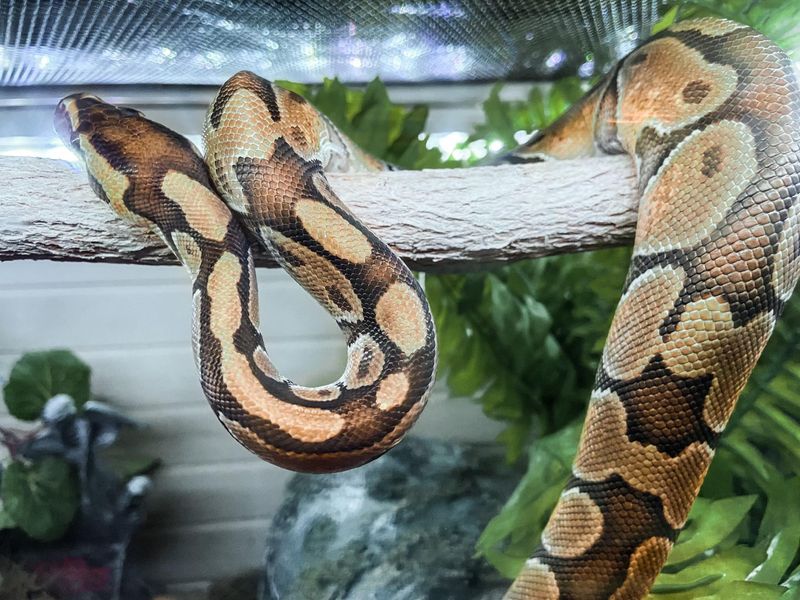
With its roots tracing back to the African grasslands, this serpent is a nocturnal marvel. Known for its striking patterns, it seamlessly blends into the night, using its heat-sensing pits to detect prey. Its gentle demeanor makes it a beloved pet, but in the wild, the ball python is a silent predator. At night, it patiently waits for small mammals to wander by, striking with precision and efficiency. This nocturnal behavior is a testament to its adaptive strategies, honed over millennia. Observing a ball python in its natural habitat is witnessing evolution in its most refined form.
Mangrove Snake
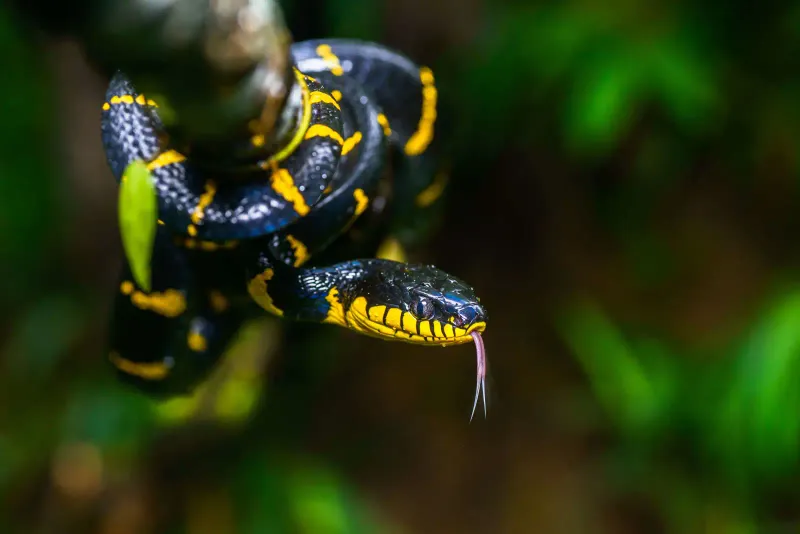
The Mangrove Snake, with its sleek black body and yellow stripes, is a sight to behold under the cover of darkness. This arboreal serpent is native to Southeast Asian mangroves, where it skillfully moves among the trees in search of prey.
Its preference for night-time hunting allows it to capture birds, lizards, and small mammals with precision. The Mangrove Snake’s agility and acute sense of smell make it a masterful hunter, especially in its unique habitat, where it blends seamlessly into the shadows, waiting for the perfect moment to strike.
Corn Snake
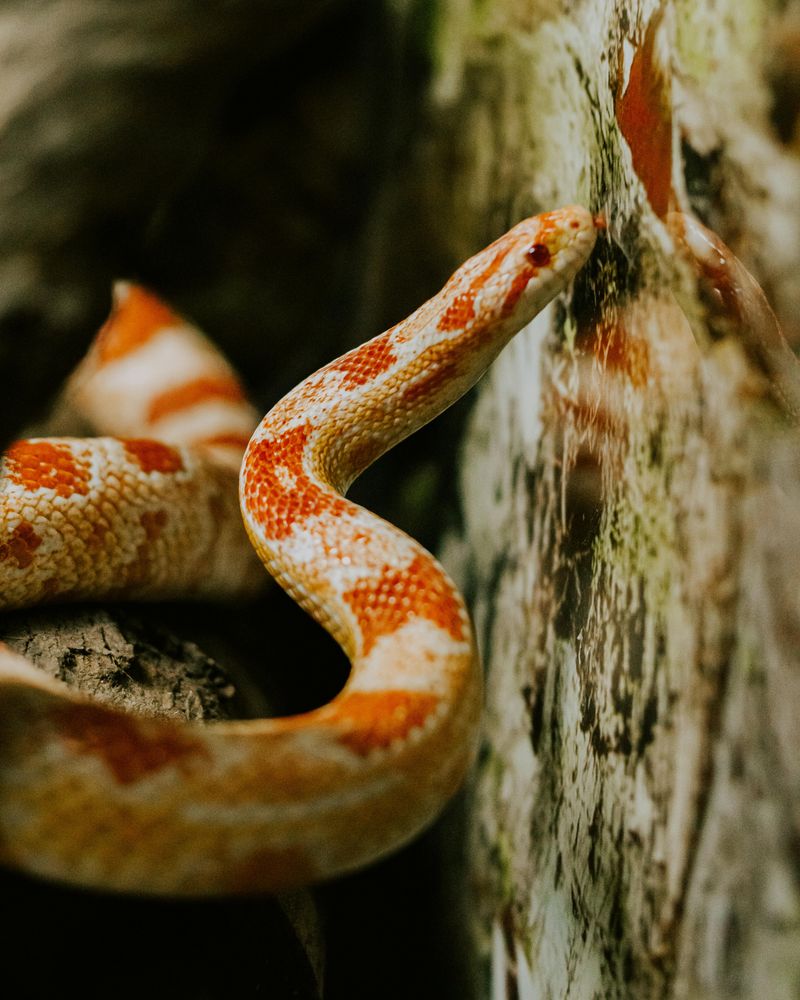
Native to North America’s southeastern regions, the corn snake is a master of nocturnal hunting. Its vibrant colors may suggest a daytime hunter, but it thrives in the cover of night. As it glides through fields and forests, it seeks out rodents, its primary prey. Despite its name, it’s not found just in cornfields; the name comes from its checkerboard belly patterns resembling maize. Its agility and keen senses make it a formidable night-time hunter, ensuring its success in various habitats. The corn snake’s nocturnal lifestyle is a perfect example of nature’s adaptability.
Boa Constrictor
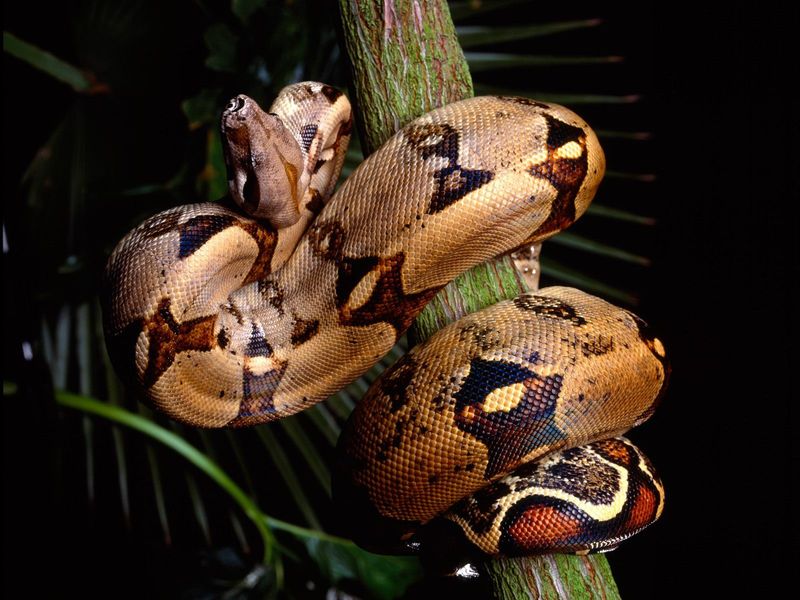
In the dense rainforests of Central and South America, this snake reigns supreme after dusk. With its powerful coils, it subdues prey, relying on surprise and strength. Its nocturnal habits are aligned with its ambush techniques, lying in wait along branches or forest floors. It targets mammals and birds, showcasing its versatile diet. The boa constrictor’s ability to hunt at night underscores its role as a top predator in its ecosystem. Its presence after sunset is a reminder of the hidden activity within rainforests, where every rustle might be its next meal.
King Cobra
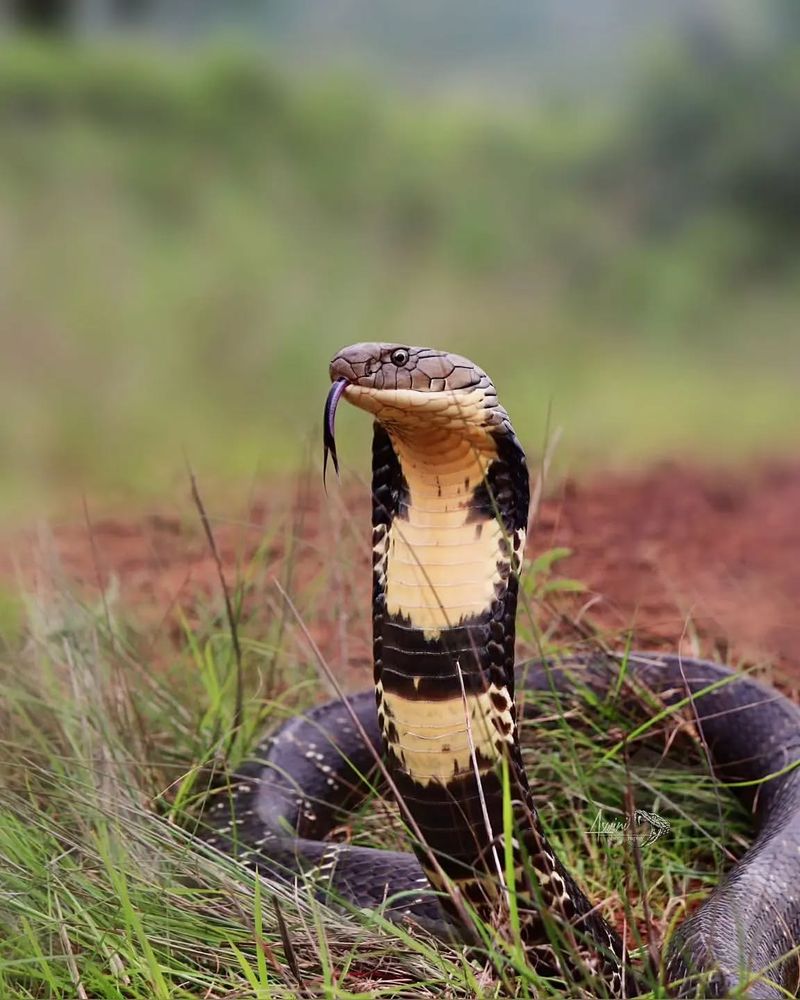
Despite its fearsome reputation, this snake exhibits a stealthy grace during its nocturnal hunts. Found primarily in forests of India and Southeast Asia, the king cobra tracks its prey, often other snakes, with unmatched precision. Its impressive size doesn’t hinder its ability to move silently through dense underbrush. This serpent’s nighttime activity is driven by a combination of temperature regulation and prey availability. It stands as a symbol of power and mystery, capturing the imagination of all who encounter its path. Observing the king cobra is to witness the art of nighttime predation.
Hognose Snake
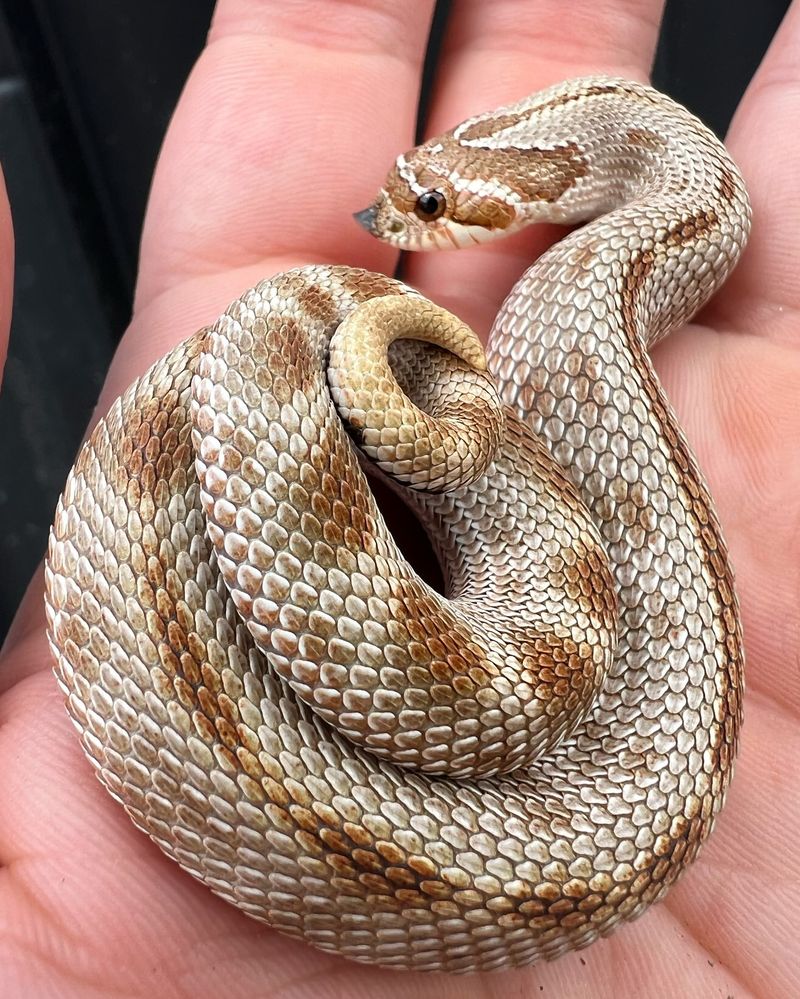
The hognose snake, with its distinctive snout, is a unique inhabitant of North American deserts. Its nocturnal lifestyle is partly driven by the harsh daytime temperatures of its environment. Known for its dramatic defensive displays, this snake prefers to hunt at night, seeking amphibians and insects. Its upturned snout aids in burrowing, a skill that serves it well both in hunting and evading predators. The hognose snake showcases how specialized adaptations can define a species’ success in its niche. At night, it becomes an active forager, making the most of its desert home.
Gaboon Viper
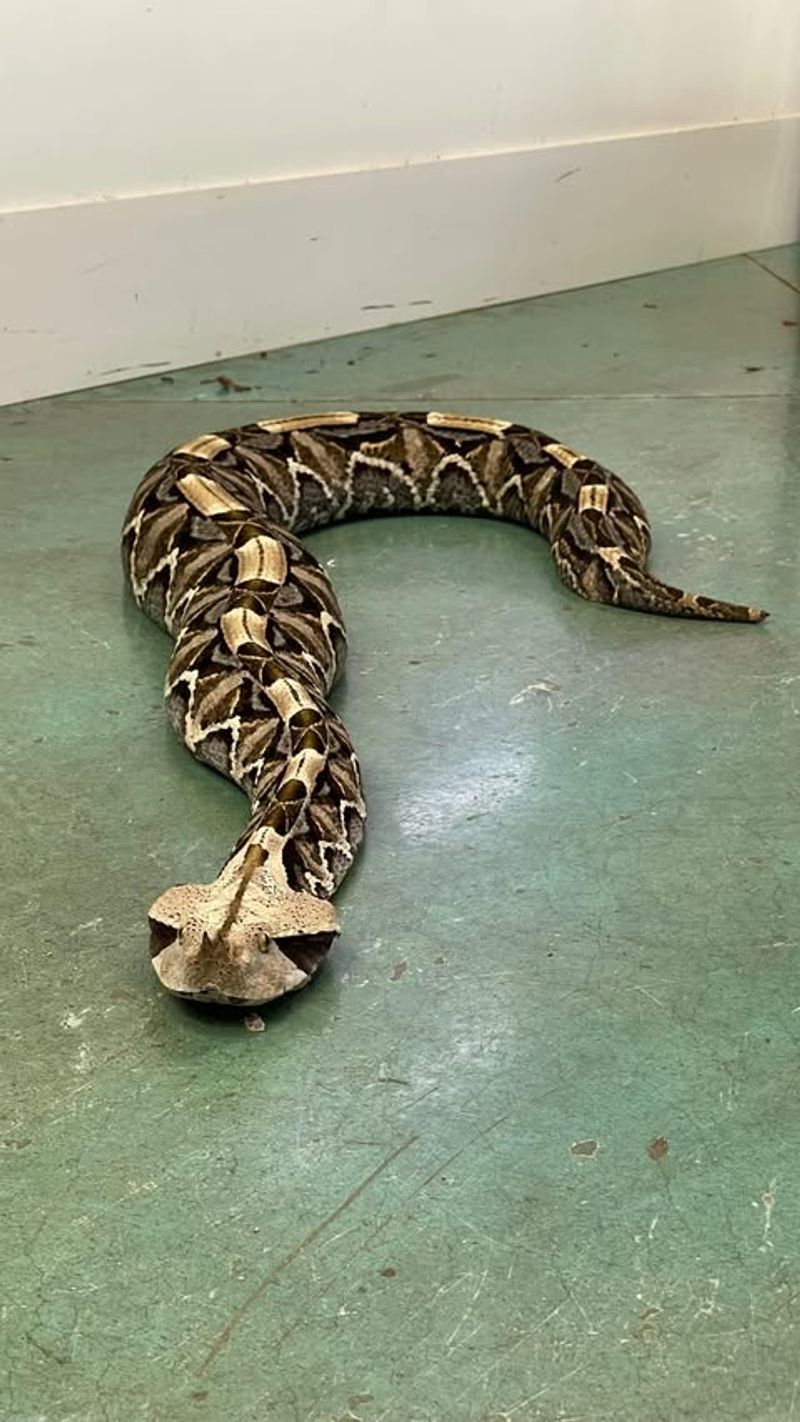
With the heaviest body of any viper, the Gaboon Viper is an expert at ambush. Found in the rainforests and savannas of sub-Saharan Africa, it uses its cryptic skin pattern to blend into the leaf litter. Its fangs, the longest of any snake, are a fearsome adaptation for delivering a potent venom. Nocturnal by nature, it relies on stealth and patience, waiting motionless for unsuspecting prey. This snake’s nighttime behavior highlights the lethal efficiency of ambush predators. The Gaboon Viper exemplifies the perfect blend of power and camouflage in the animal kingdom.
Rattlesnake
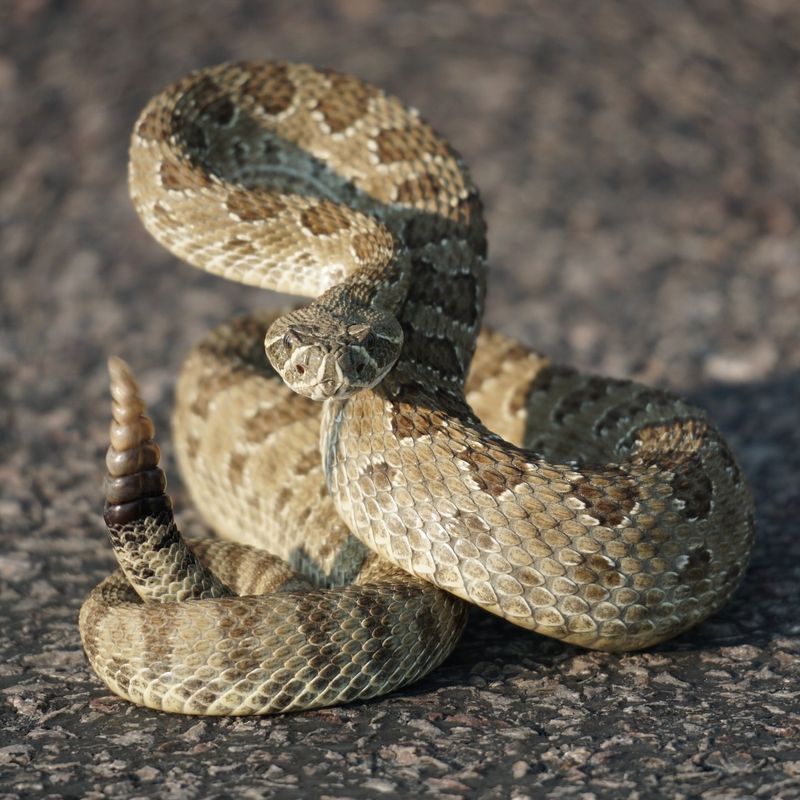
In the deserts and rocky terrains of the Americas, rattlesnakes are synonymous with night activity. Their signature rattle warns away threats, but during a hunt, they are silent and strategic. Rattlesnakes utilize heat-sensing pits to detect warm-blooded prey in the coolest hours. They’re a key part of the ecosystem, controlling rodent populations. These serpents embody the desert’s nocturnal life, adapting to the challenging environment. Their unique hunting style, combined with defensive features, makes them both feared and admired. The rattlesnake’s night-time prowls are a testament to its survival skills.

